
Whether you're out for a lightly loaded hill walk, climbing multi-pitch mountain rock, or even just heading to the bouldering wall, a small rucksack is sometimes all you need. Not just lighter and less bulky on your back, a smaller pack has the added advantage that it encourages a more disciplined approach to packing. Of course you can go too far when it comes to cutting out the clutter, and we reckon models in the region of 20 litres strike a versatile balance between compactness and capacity.
The 11 packs here range from 18 litres to 25 litres. Most are aimed at walkers, and tend towards three season use. However a few cross over into rock climbing and scrambling, alpine or winter mountains, running or even cycling. While primarily looking for walking-friendly packs here, we've also considered the addition of more technical mountain-oriented features to be an advantage.
Here are some of the questions we've asked of them:
Fit and comfort
Is a female version available? Is it well padded for comfort, but vented and airy enough not to be a sweaty mess in summer? Do the shoulder straps permit free arm movement? Will the hipbelt and back length fit a larger user, and if not can the belt be removed for neatness? Does the back system provide sufficient support for the sort of load you'll be carrying in a small pack? Does the fit feel close and balanced enough for climbing, scrambling or running?
Capacity
Judging the size of a pack is not an exact science, so for the stated size does it seem spacious, small or spot-on?
Weight and build quality
The advantage of a small pack may be slightly undermined if it weighs loads, but on the other hand going super light tends to compromise durability. So is it sturdy enough to stand up to a fair amount of mountain abuse?
Features
Some of us prefer simplicity in a small pack, while others look for a wide range of features. There's no right answer here, but some features are clearly done better than others. How many external pockets are provided, and are the various pockets on offer large enough for a light shell or a 1 litre water bottle? Is there at least one secondary zipped pocket (we think one is a bare minimum) and does it have the tiny but incredibly useful addition of a key clip? Do the side compression straps work properly to compress a half-full rucksack, and are they long enough to double as a place to hold large objects? Do you get daisychains or other loops to clip stuff on? Are pole attachments provided? How about that seasonal essential, axe loops?
Black Diamond Magnum 20 - £65
Billed as a model for hikes and scrambles, the Magnum 20 is a good-sized day pack at a fair price. It's not massively heavy, the fabric is up to a bit of rough treatment, and the pack has a close and well-balanced feel when you're climbing or scrambling. However a number of the external features could be better.
Fit and comfort
This pack is not gendered, but seems to be designed for either men or women. With only a shallow depth of padding, a soft foam that bends into the shape of your back, the fit is body-hugging. Padding on the shoulder straps is fairly firm and not too deep, and they have a pronounced sculpted curve that offers a close fit without limiting arm movement. Overall the feel is close and well-balanced, which is just what you want when scrambling or climbing. Being so insubstantial, it's not a very supportive back system for heavier loads. You might argue that's not really an issue with only 20 litres to fill, but it is worth mentioning that once you start stuffing in hard bulky objects (climbing gear, camera equipment etc) the Magnum easily gets deformed and uncomfy. And when you to squeeze the pack with the side compression straps, it's the back padding that scrunches in, not the body of the bag.
Perforations in the foam padding help with breathability, so while there are better-ventilated packs in this review the Magnum is not too sweaty in hot weather.
The Magnum 20 only comes in one back length - short - so for taller users the hip belt is totally redundant. Luckily it can be easily removed (it's just lark's-footed on). The belt is simple webbing with no padding. Fans of a cushioned hip belt might not be impressed but we tend to think of hip belts as entirely optional on such a small pack since they only really serve to hold it steady on your back rather than taking any of the weight, and hence this one suits us well.
Weight and build quality
At 610g (BD say 526g) the Magnum 20 is not one of the very lightest packs on review, but it's not bad. Its 210d nylon ripstop main body feels good and tough for its weight, while for extra longevity the base panel is a burlier 400d nylon. It has stood up to mountain use so far but it's clearly not as lovingly made as some of the rival packs in this review.
Capacity
The Magnum 20's version of 20 litres is slightly more generous than some, and with a bit of packing discipline it's roomy enough for a decent hill day. Its broad lozenge shape and wide opening make it easy to pack, too. A 16 litre version is also available.
Features
Black Diamond have given the Magnum 20 a reasonable set of features for all-round mountain use, but also a couple of duds. In addition to the main zipped entry there's a small zipped front pocket (a good place for snacks) and a zipped valuables pocket with a soft lining to keep your sunglasses scratch-free, and the essential (for us) key clip.
Inside there's a hydration bladder sleeve. Outside is a wide flap pocket; this isn't very deep, but you can slip a lightweight shell in for quick access. This pocket expands (a little) and tightens via the side compression straps, but it's not a secure place to hold anything bulky like a water bottle, and we're not convinced it's really that useful compared to a more conventional stretchy pocket. The pack can be compressed a little using the external elastic webbing, but this is a fussy and fiddly feature which doesn't double as a particularly safe place to store anything, so overall we'd probably get rid of it.
Two rows of daisychain webbing extend the outside storage options - a good place to clip a helmet for instance - but as this webbing is mounted on the external flap pocket it can all get a bit saggy if you start attaching anything heavy. Stretchy side pockets are provided, but they're not deep enough to safely hold a water bottle, so their usefulness is limited. A trekking pole/ice axe loop is promised, but we can't find it.
Black Diamond say:
With a 20-liter storage capacity, the Black Diamond Magnum 20 streamlines your necessities on all-day missions that require a step above the bare minimum essentials. With an internal stow pocket, and a trekking pole or ice axe loop supplemented by stretch-mesh side pockets and front web compression, storage options are many.
- Weight: 610g
- Capacity: 20L (generous)
- Contoured shoulder straps and OpenAir™ backpanel
- Zippered panel opening and internal stash pocket
- Easy-to-remove 20 mm webbing hipbelt
- Trekking pole/ice axe loop and bike light slot
- Stretch-mesh side pockets, front web compression and storage
- Hydration compatible
For more info see blackdiamondequipment.com
Berghaus Fast Hike 20 - £70
Not quite like anything else we've looked at here, the Fast Hike 20 feels more like a running pack than the other more walking or climbing oriented models on review. Combining a low weight with a close and well-ventilated fit, it's a great option for fast-and-light mountain days, but perhaps a bit specialised for general day-to-day use.
Fit and comfort
The Fast Hike 20 is officially a men's model, with no corresponding women's version - not that it matters quite so much on a small pack like this compared to a trekking behemoth.
With its firm foam sheet, the Fast Hike hugs the back closely, while protecting you from any hard pointy pack contents. This sheet can be removed if you want to save weight, though the pack then becomes quite floppy and of course less well-padded. For ventilation Berghaus have perforated the foam sheet with hundreds of holes, and the mesh overlay is similarly airy, making this a cool and comfy carry in hot weather. The shoulder straps are equally breathable (you can literally breathe through them). They are also soft, low-profile, sculpted and incredibly wide, giving the harness the fitted feel of a trail runners' race vest. This spreads the load over the shoulders so that you could almost be wearing the pack rather than carrying it. Anchoring in two places at the bottom, which seems to help pull everything in to the small of your back, the shoulder straps give this pack a really close and non-bouncy fit that makes the Fast Hike ideal for running.
Only one back length is available, and as with most small bags it's very much on the short side, so on our reviewer the hip belt runs uselessly mid-tummy. Luckily it can be folded around the pack or easily removed. It's just a webbing strap with no padding (which is all you need, at most, on a 20 litre pack). For maximum efficiency fit-wise the harness is clearly designed to be used in conjunction with the belt, but even without this fitted we've found the pack doesn't shift about too much when running.
Weight and build quality
At just 535g this is a very light rucksack for its size, which is appropriate given its name and walking/running crossover potential. Berghaus have kept the weight down by adding a minimum of zips and pockets, and using thin webbing. Despite the low weight the build quality feels good, and the Robic high tenacity nylon ripstop fabric seems really tough. We'd be confident this pack should stand up to some fair abuse. Lightweight fans can reduce the weight to around 410g by removing various components.
Capacity
On paper it's another 20 litre pack, but in practise the Fast Hike 20 feels a lot more generous than some rivals - indeed its main compartment is about as spacious as the 23 - 25 litre models we've looked at here. Its top-loading entry helps too, since it's easier to stuff full than a zip-around model. Outside pockets are smaller than some, but the compression straps and daisychains will hold a lot more than most. And if you've got a half load the rolltop closure allows you to compress the pack from above as well as the sides. Overall we reckon the Fast Hike 20 is a really useful size for hill days, and it demands slightly less packing discipline than some.
Features
Standing out from the other models on test, this is not a zipped entry pack, but a top-loader with a rolltop closure. Unlike a conventional lidded model there's no drawstring to faff with, but using the rolltop and two buckles is admittedly a bit more fiddly than a zip. On the other hand it's also more weatherproof.
Most of us appreciate at least one smaller zipped pocket on any pack, and here Berghaus have included an internal zipped valuables pocket which is just enough for a phone and car keys. This floating pocket can be removed (we doubt we ever will) but it's an omission not to have included a key clip.
Outside are two stretchy side pockets; these will hold a 1 litre bottle, but only just, and a little more depth would have been more secure. Preferring to keep things streamlined, Berghaus haven't bothered with the usual front pocket. Instead what you get is a little different: two thin compression straps that run right around the sides and front of the pack. These are more effective than simple side straps in their primary role - squeezing down a half-full sack - and also make it possible to carry all sorts of things on the outside, from a camping mat to a rolled-up jacket. Two sturdy daisychains made of thin cord increase your clipping-stuff-on options, though the loops are a bit small to take something like the buckle of a helmet. Walking pole holders are also provided, but while these look like they might also take an ice axe they really don't.
Last but not least, hydration. A sleeve down behind the back pad takes a water bladder, while stretchy pockets on each shoulder strap are designed to hold those little soft running bottles. With this pack there's no need to get thirsty.
Berghaus say:
Super-light, yet incredibly strong, this versatile 20 litre daypack gives you greater control of the all-important weight. The chassis system moves with your body, allowing you to wear the weight with ease, and a detachable waist-strap and back pad, among other removable components, means you can leave behind up to 125g when you need to travel ultra-light.
- Weight: 535g
- Capacity: 20L (generous)
- Highly breathable honeycomb mesh, with back padding
- Wide shoulder straps for comfort
- Chassis carrying system
- Tough and lightweight with removable components
For more info see berghaus.com
Deuter Speed Lite 20 - £65
The smallest model in this review, the Speed Lite 20 is a nice little pack with a simple, uncluttered feel. It is well made and well-ventilated for summer use, and there are no unnecessary or fussy features. Shame the front pocket is poor!
Fit and comfort
No specifically female version is offered but we reckon this is a pretty unisex fit. As a small pack the Speed Lite 20 inevitably has a very short back length. Only one size is available in this capacity, and it's not adjustable, so on our large-ish reviewer the hip belt runs uselessly around the bottom of the ribcage; we think you'd have to be pretty short for the hip belt to fit properly. Luckily on a bag this small a hip belt is of limited advantage anyway. This one can be removed, or easily folded around the pack and forgotten about. It's a simple webbing belt with no cushioning, which again is fine on a tiny light pack. When it's removed two plastic buckles are left attached to the pack. Annoyingly these can dig in to the wearer's back, and since the belt is basically redundant we'd be tempted to cut them off.
For climbing and scrambling, the Speed Lite 20 has a decent close fit. The cushioning is very soft, and while this is nice and comfy it does mean that the whole back can deform when you over-fill the pack (as you may sometimes be tempted to do with a bag this small). On the plus side the back's open mesh is really breathable, making the Speed Lite a good choice for sweaty weather. Ditto the padding on the shoulder straps, which also feels nice and airy. These straps are well sculpted for a close-but-unrestrictive fit, though if we're being picky (it's our job) we'd prefer thinner, firmer padding which can feel a little less bulky when your arms are raised.
Weight and build quality
In our experience you wouldn't usually look to Deuter for a lighter pack, but weighing just 456g (Deuter offer a conservative 490g official figure), the well-named Speed Lite is the lightest model in this review. Granted it's also the smallest, and one of the simplest. Nevertheless despite its light materials the build quality is good - as we've come to expect from Deuter - and as such the £65 price tag seems good value.
Capacity
Though it's officially larger than the 18L Petzl Bug, in practise the Speedlite seems smaller, and has the tightest capacity in this review. Since its small internal dimensions are compounded by more limited options for external storage than many rivals, it is definitely one for lightly equipped days only. The Speed Lite range also includes a 6, 12 and 16 litre model (all of which mist be pretty tiny) as well as a few larger packs in both men's and women's versions.
Features
Deuter have kept things simple here, an approach that we welcome on a pack of this size, on which a host of extra features could get cluttered. A zipped entry gives access. None of the bags on review feature waterproof zips, but though some make up for this with a raincover the Speed Lite doesn't offer that. On balance we'd rarely use one anyway, so saving weight and bulk here is fine by us. It's a narrow gauge YKK zip - some others are chunkier, and our slight worry is that if you habitually over-fill this pack (it's so small that this is bound to happen) then this light zip might suffer in the long term. For small loose items there's a single little zipped valuables pocket, with the essential key clip; one extra zipped compartment seems plenty on a 20 litre bag.
Inside there's a hydration sleeve. Outside you get two small-ish stretchy side pockets; these are just deep enough to hold a 1 litre bottle, but a couple of centimetres extra depth would have made them much more secure. You also get a front pocket/sleeve thing. We're not sure what to call it because it's curiously hard to access, has very little room for anything you might conceivably want to put in it, and doesn't expand. As such it's basically just a pointless fabric overlay, an odd addition on an otherwise sensibly functional model.
The side compression straps work well, and double as walking pole retainers - you can carry poles securely either spike down or spike up.
Deuter say:
Fast and light on the mountain with the Speed Lite. The minimal use of materials and its reduction to the essentials make the Lite back system an ultralight all-rounder and dynamic companion on day tours and for many other athletic uses.
- Weight: 456g
- Capacity: 20L (small)
- Carrying comfort through ergonomically shaped shoulder pads
- Loops for helmet holder (accessory)
- 3M reflector
- Stretch side pockets
- Reinforced zipper loops easy to handle even with gloves
- Valuables pocket with zipper on top
- Loops for glasses on shoulder strap
- Loop for safety light
- SOS label
- Hydration system compatible
- Wet laundry compartment
For more info see deutergb.co.uk
Lowe Alpine Tensor 23 - £60
Slightly more spacious than most, and with a sensible range of features, the Tensor 23 would be an excellent choice for all-round mountain use outside of winter. The price seems fair for a well-designed pack, though it's a shame the compression straps are so short since this does limit what you can do with them.
Fit and comfort
This seems to be a unisex model, something our reviewers would concur with. A pre-curved back panel helps give the Tensor a nice close fit. The padding is firm enough to protect you from pointy pack contents, and perforated for breathability. The shoulder harness is highly breathable too, making this one of the better options for use in hot weather. The shoulder straps are sculpted to hug the body without limiting arm mobility, and we like that the cushioning is fairly thin rather than feeling bulky and in the way. Even with the sternum strap done up we probably wouldn't choose the Tensor for running since there's a bit of bounce, but overall the fit and balance feel good if you're climbing or scrambling.
In common with the vast majority of models on review the tensor comes in only one fixed back length, and since this is a small pack that length is pretty short. For taller users the hip belt will be more of a stomach strap. This simple webbing belt has no padding, which is fine by us, and it is easily clipped around the back of the pack, or removed altogether.
Weight and build quality
Weighing just 524g, the Tensor 23 is light for the comfort and capacity on offer. The main fabric seems tough enough for reasonable rough use, and the build quality is on a par with most similarly priced models. Some of the buckles feel a bit plasticy, however, and the main stretch pocket doesn't inspire as much confidence as the rest; since its upper edge isn't hemmed it seems a bit flimsy and floppy.
Capacity
Approaching the upper end of the size scale in this review, the Tensor's 23 litres makes it just that bit more spacious than its 20 litre rivals (and the stated capacity seems about right). It's a convenient size for summer mountain day trips - assuming you're not carrying much in the way of technical gear - and we think the extra 3 lites or so gives you just that bit more flexibility. When it's not full the side compression straps work well to stabilise a half load. With its reverse teardrop shape, access via the broad zipped top is easy. If you think 23 litres is overkill the Tensor range also includes simpler 5, 10, 15 and 20 litre alternatives.
Features
The Tensor 23 has a less cluttered exterior than some rivals. Its main additional external storage comes in the form of a large stretch mesh pocket. This one is a much better size than most, with plenty of room for a shell or even a light insulated jacket; it's easy to slip a map in here too since it has a wide opening. The pocket hooks into place at the top, which works fine; it's just a shame the top edge of this mesh sleeve isn't hemmed for extra strength because in other respects we think this is one of the better external pockets (simple, spacious and secure...).
A stretchy sleeve on each side gives you more storage options, and these ones are slightly deeper than on some rival models, which makes them that bit more confidence inspiring when you're carrying a 1 litre water bottle.
Lowe Alpine haven't included daisychains or many other loops for clipping on things like a helmet, and nor is there a means of attaching a rope; with the addition of these the Tensor would have been a nice mini climbing pack, but in their absence it's more of a general purpose model. You do get two pole attachment points, but since they don't also fit axes the pack's seasonality is limited to snow-free use. Being very short, the side compression straps really aren't much use in their secondary role as a place to strap things. This is an odd thing to have neglected as it'd have been easy to add a couple more inches here.
An external zipped pocket is a decent size for hat, sunglasses etc, and it has a key clip. Inside is a smaller zipped valuables pocket - and we think two zipped pockets is really enough on a little daypack. A bike light loop and a hydration bladder sleeve complete the features on offer.
Lowe Alpine say:
A lightweight multi-purpose day pack that's great for day hiking in the summer, or lightweight cragging and bouldering. The Tensor 23 features the AirContour back system, with a pre-curved back panel that promotes a closer fit and more natural movement. A front stash pocket gives easy access so you can grab a guide book or snacks on the move, while an internal security pocket and zipped top pocket keep valuables like wallet and phone safe. The 23 litre capacity has space for climbing gear and extra layers, and side compression straps add stability.
- Weight: 524g
- Capacity: 23L
- Lightweight breathable back system
- Stretch water bottle side pockets
- Front stash pocket for quick access
- Zipped top pocket
- Side compression straps
- Internal zipped security pocket
- Hook and Loop pole lash
- New updated TipGripper walking pole attachments
- Hydration compatible
- Bike light loop
- Removable waistbelt
- Pre-curved back panel
For more info see lowealpine.com
Salewa Mtn Trainer 25 - £115
The most spacious of the models on test, this is a sturdy and largely well-designed pack that's ideal for all-round summer mountain use. Its unusual split straps work well and the vented back is great; however with a short back length and bulky fixed hip belt, the Mtn Trainer isn't ideal for taller users. Its compression system is not the best either.
Fit and comfort
This is officially a unisex pack. Few of the models on review feature any kind of back structure, but the Mtn Trainer 25 is one of the exceptions. The harness hangs off a semi-stiff back sheet, with extra rigidity provided by a single central bar. You could remove this strut if so inclined, but given the heavier load you might manage to carry in this 25 litre pack a bit of rigidity is probably going to be welcome. We like it.
The first thing you notice about the Mtn Trainer 25 is its unusual split shoulder straps and hipbelt, a unique feature in this review. These work really well, allowing the load to be spread wide on the body without being as bulky and intrusive as a one-piece strap this broad would have been. Their firm padding is supportive and comfortable without being too deep and squishy. The sculpted harness has a body hugging fit, and as you move the gap in the straps closes, so you can raise your arms unrestricted. Having big air gaps everywhere clearly helps with ventilation, though it has to be said that the solid padded parts of the straps are less breathable than the perforated cushioning on many rival models, so the design isn't quite as airy as it may first appear.
That said, the back panel is one of the better-vented on test. In contact with your back are two foam ridges - scored with multiple channels to aid air flow - while running up your spine between the pads is a big air gap. This arrangement gives a firm, close and supportive fit on the back while actually touching you as little as possible. According to Salewa this allows "higher perspiration per cm2 than traditional constructions and reduc[es] temperature at the central back by 1.6°C after 15 minutes, thanks to its reduced contact area and 3D air channels". While we'll have to take their word for the numbers you can take our word for it that it's effective in the real world.
Available in only the one fixed size, to fit a torso length of 45-53cm, the Mtn Trainer is sadly not ideal for taller users. Its hip belt is a lot more substantial than any other on review, and while it is comfortable and effective at taking some of the load, it does seem a bit excessive on a 25 litre sack. And to state the obvious, it is only going to be any use if it actually fits you correctly. On our taller reviewer (1.83m) the belt sits too high to be usable, and since it cannot be removed, becomes merely a bulky and redundant nuisance. If your pack is short but your back is long, a removable belt is better. A padded fixed belt is also a pain when climbing with a harness, and since the Mtn Trainer 25 is apparently made for via ferrata it's odd that Salewa don't seem to haven't thought about this.
Another downside is that the chest strap can only be set in two places, not moved up and down at will.
Weight and build quality
While Salewa quote a conservative 933g we make it 874g. Either way the Mtn Trainer 25 is not a light pack, even accounting for its larger volume, and the weight of all those padded straps, and the structured back, clearly adds up. In its defence it feels very well made, while its 100D nylon is tough enough to cope with plenty of abuse.
Capacity
A 25 litre capacity makes this the biggest pack on review, with a spacious main compartment that's a good relaxed size for a summer hill day if you're not being super disciplined about packing. However additional pockets and external storage options are more limited than on most rival models, while it's not possible to compress the pack much at all if you happen to have a smaller load. It's a long, thin pack body that doesn't feel bulky or obtrusive on your back when climbing. And the zipped entry only opens part-way, which helps if you're trying not to spill the contents down a cliff when you open it. A larger flip-top Mtn Trainer 28 is also on offer.
Features
The Mtn Trainer's clean uncluttered exterior suits its use as a via ferrata/scrambling pack. Unlike most other models there's no large external pocket, though you do get two stretchy side pockets which are big enough to securely hold a 1 litre bottle. There's also one small-ish zipped pocket on the hipbelt, a good place for some snacks but not really big enough for gloves or a wooly hat. Up top you get a decent sized zipped valuables pocket with a key clip, while inside there's the standard water bladder sleeve.
A central daisychain gives you somewhere to clip things like a helmet, but other lashing-on points are limited. Instead of the standard side compression straps, which often double as a place to hold poles or axes, Salewa have gone for a quirky top compression system. This clips up to the top of the pack, so we've used it as a rope holder - though the lack of side straps to hold down the ends of your rope coil does leave things a bit floppy and unbalanced. The strap is not much use for attaching anything else, and actually it's of limited utility as a compression system since it only squeezes the very top of the pack. We think it's a bit of a fail.
Pole attachments are provided, and the top of the pole is secured under that funny compression strap. It's not a system that works with an ice axe, so you'd have to rig your own attachment by adding a webbing loop on the daisychain. Even then you're only going to be able to carry one axe, which does slightly limit the Mtn Trainer's winter or alpine use.
Since the main zip is exposed to the weather, and not water resistant, Salewa have included an integral pack cover. You could leave that behind to save a little weight.
Salewa say:
A comfortable, well-ventilated backpack for technical hikes and via ferratas, designed for a close carry with reduced contact and split shoulder straps for increased breathability and twin compression for load control.
- Weight: 874g
- Capacity: 25L
- Raincover
- Hipbelt pocket
- Daisychain
- Twin compression system
- Pole fastening
- EVA pads with 3D channel ventilation
- Split hipbelt and shoulder straps
- Removable ISB Bar
for more info see salewa.com
Petzl BUG 18L - £50
The BUG may be one of the smaller packs here, but with its nice wide shape it's surprising how much you can squeeze in. We've used it on summer mountain days, with warm clothing and a tiny rack, and though the rope and helmet had to go on the outside that's easily managed with the BUG's neat rope loop. It's not a comfy load carrier, and you are guaranteed to get a hot sweaty back, so as a walking pack it's not great. But the BUG has clearly been designed to climb in, and for that use it's the best in this review.
Fit and comfort
This is a unisex model. Looking at the back system, this is a very basic model with none of the comfort/fit refinements found elsewhere. Petzl are keeping it simple. This makes sense when you're climbing, but arguably less so on the walk-in, when a fully loaded BUG doesn't feel the most comfortable or supportive of packs.
A foam back sheet provides a modest bit of structure, and plenty of padding depth to protect you from sharp jabbing contents. It is close-fitting, which is of course good when you're climbing; but with no semblance of ventilation of any sort, you'll quickly get a very sweaty back on the walk-in. Ours was visibly sweat-stained after just one day. The shoulder straps are quite broad, to help spread the load, and with a very shallow depth of firm padding; this we like, as they fit neatly to the wearer without feeling bulky. With their contoured shape the straps do not restrict arm movement at all - vital in a climbing pack.
Since the pack has only a very short back length, taller people will not fit the hip belt. A simple webbing loop, it's useless for taking any of the load in any case, and only really designed to help hold the pack in place. We just fold it out of the way around the pack; it's a shame that it cannot be removed. We find the sternum clip is vital for keeping the shoulder straps in place; it works well enough, but its minimum length is still quite long, something thinner wearers might find a disadvantage; it can't readily be removed and replaced with an alternative.
Weight and build quality
At 550g the BUG is respectably light, if not remarkably so for a small bag. Its nylon fabric is good tough stuff, well up to the rough treatment it's going to get when climbing, and the sides and base are reinforced with an even more durable layer. The stitching feels strong too, for instance the bar tacking on the daisychain.
Capacity
Though it's officially only 18 litres the BUG is easily as big as the tighter 20 litre packs on review, and its squared-off lozenge shape makes packing and entering it a bit easier than narrow models. And then, of course, there are all the outside clipping options too. The wide zip top only opens about halfway down the bag, which helps you not spill everything down the route when rooting about mid-climb. It's billed as a multi pitch rock sack, but you'd struggle to fit a full trad rack in it so the ideal use is probably big continental bolted routes. We've got on well using it on scrambling days too.
Features
Despite having a little storm flap, the zipped entry is in no sense water resistant, and naturally there's no integral pack cover. In keeping with its rock climbing remit, this is a fine weather pack.
Since you don't want exterior clutter on a climbing pack, simplicity is the name of the game here. There's no way you'll get much climbing gear inside so to make up for this Petzl have included a sturdy external daisychain to which you can clip shoes, helmet, quickdraws etc. There's also a rope carrier. This works well, holding a rope securely in conjunction with the two side clips, and tucking neatly out of the way behind the back sheet when not needed.
There's only a single compression strap on each side, so when you're carrying a very small load the BUG doesn't scrunch down quite as neatly as some. And with no wand pockets or other attachment points there's no way to carry axes or poles on the outside. This is very much a summer rock pack, and if you like using poles to access mountain crags then you'll need a pair that collapses small enough to stow inside.
One external zipped pocket is provided - not deep, but just large-mouthed enough for a Rockfax guidebook or a map. Inside you get a zipped mesh valuables pocket, with the necessary key clip, plus a little sleeve for a water bladder. For flat things like maps and guides, there's also a space sandwiched cleverly between the back sheet and the bag.
Petzl say:
The BUG backpack is designed for single-day multi-pitch rock climbing, and is versatile enough for everyday uses. Suitable for carrying gear on the approach and while climbing (hydration system, food, clothing, shoes). It is designed for the most efficient use while climbing: low profile, allows for full range of movement, stowaway waistbelt, carries high on the back enabling unobstructed access to your harness.
- Weight: 550g
- Capacity: 18L (generous)
- Side compression straps
- Adjustable strap for attaching a rope to the top of the pack
- Wide exterior pocket, interior compartment for hydration system or laptop, wallet pocket, topo pocket in back of pack
- Stowaway waistbelt
- Adjustable sternum strap helps stabilize the pack while climbing
- Bottom and sides lined with high-tenacity fabric
For more info see petzl.com
Gregory Miwok 24 - £85
Another of the larger models, the Miwok 24 is a well designed pack that combines a practical set of features with top-notch toughness. The supportive and adjustable back system is great for heavy loads, and very well vented for hot weather. Though a bit fussy for regular climbing, and too heavy for serious running, it's hard to fault for year-round hillwalking and scrambling.
Fit and comfort
The Miwok 24 is officially a men's pack; if you want a female-specific fit you could look at the similar Maya 22. Uniquely in this review, the back system is adjustable for length via a hook-and-loop pad. It's a simple but sturdy system that gives you about 10cm play and stretches almost enough for the hipbelt to properly fit our 6 foot/ 183cm reviewer, something no other model in this review comes close to. Adjustability is something you don't often see on a small day pack, and given that most models of this size are really too short for taller adults it's a welcome addition here.
The shoulder straps are well contoured for a close fit without limiting arm movement, and broad to help spread the load. The hipbelt, meanwhile, is effectively all one piece with the back panel, and wide but very soft and flexible to closely fit the body. That fitted feel carries on in the back panel, which is curved to match the shape of your back. It's all ever so slightly stretchy too, so that it moves a little with your body as you bend and twist. Though the Miwok has no solid frame its carry system still manages to provide plenty of support, making this one of the most comfortable and well-balanced packs with a heavier load (its recommended upper limit is a respectable 9kg).
Ventilation is brilliant throughout; with perforated cushioning and plenty of mesh in contact with your back, this is one of the top choices for warm weather use.
Weight and build quality
If going ultralight is a key concern then the Miwok might feel a bit overweight at 838g. However you're getting a lot of pack for that weight, both in carrying capacity and in terms of adjustability and comfort. With a 210D nylon body and mega-tough 420D nylon base its thick fabrics and generally sturdy build account for a lot of that weight too. This seems one of the best-made packs on review, and we'd expect it to survive plenty of rough treatment.
Capacity
At a generous 24 litres the Miwok is (narrowly) the second largest pack on review. Its main compartment is slightly smaller than the Salewa Mtn Trainer 25's, but the Miwok compensates for this by having more options for external storage. It's a good capacity for a summer mountain day if you're not feeling inclined towards minimal packing, while if you do have a smaller load then the compression system works well with a half- or three quarter-full pack. The zipped entry opens wide, though a bit less length in the zip might make it easier to avoid spilling pack contents.
Features
As well as the sturdy (but not water resistant) main zip you get two zipped pockets on top. One is small and lined with a brushed fabric to protect sunglasses from scratching; the other is a full-depth sleeve behind the back panel, designed for a water bladder but equally handy for quick access to a guidebook or map without having to cram it in the main compartment. Inside is one small mesh valuables pocket, with the essential key clip.
External storage often proves useful on a small pack, and the Miwok has plenty. Spacious enough for a shell or even a light insulated jacket, its stretchy front mesh pocket is one of the bigger and more practical such offerings we've seen in this review. The stretchy sleeves on each side, meanwhile, have enough depth to safely stash a 1 litre bottle apiece. Gregory have added the usual side compression straps, and while these work well in their main role they are only moderately useful for attaching things to. A bit more length and a clip closure would have improved them in that regard. Down on the hip belt, a spacious zipped pocket on each side proves useful for a hat, thin gloves and snacks; if you're going to have a hip pocket then make it big, we say.
Pole fans get a single attachment point, while for winter use it's good to see a proper axe holder (you can only carry one, but one seems appropriate on this walking-oriented pack).
Gregory say:
Designed for active trail pursuits but capable of much more, the Miwok 24 combines flexible Biosync ventilated suspension with the volume and features you want in a daypack, commuting pack, or all-around lightweight backpack. Top to bottom Biosync fit provide unhindered motion and low profile stability, in keeping with the Miwok philosophy of agility and balance.
- Weight: 838g
- Capacity: 24L
- Material: 210D Honeycomb Cryptorip HD Nylon & 420D high-density nylon
- Supportive Dual Density Foam Framesheet with Perforated EVA Top Layer
- Adjustable BioSync shoulder harness
- Front and side stretch mesh pockets
For more info see eu.gregorypacks.com
Osprey Syncro 20 - £90
A multi-sports model with a strong emphasis on cycling, the Syncro is comparatively heavy for its capacity, and with so many features, zips and fussy pockets that we've found it quite fiddly to use. On the plus side it is supportive, comfy and superbly well-ventilated, making it one of the nicer packs to actually carry.
Fit and comfort
Bad news for taller users is that the Syncro 20 has a fixed back length, and comes in only one size. On our 183cm/6 foot reviewer it is sadly too short for the hip belt to be any use, but we've tried it on smaller folk who declare themselves impressed. However it is available as a male-specific fit only.
Unusually for a small pack the back system is structured, being built on a sprung wire frame. Such a thing would be necessary for load carrying on a bigger pack, but is it overkill on a 20 litre model? We're not sure, but it does make for a stable and supportive carry so maybe there's something in it.
Tensioned onto the frame is Osprey's AirSpeed back. This consists of a trampoline-like mesh panel, which is held away from the body of the pack so that there's nothing solid and sweaty in contact with the body of the wearer, and to create an air space between walker and load. This sort of arrangement is fairly standard on trekking packs and larger walking packs, but in this review it's the only example. In hot weather we have found it great for ventilation, and although we tend to be wary of the way air spaces can shift the centre of gravity away from your body and thus make for an unbalanced feel, we've got to say that in this case the worry is unfounded. With a bit of give to it, the back sheet conforms slightly to the curve of your back for a lovely close fit.
The shoulder straps are sculpted for a hugging feel without hindering when you reach up, and quite broad to spread the weight. Made of perforated foam and mesh, they are highly breathable. Equally airy are the fins of the hip belt, which wrap closely around the wearer. If it fits you properly, the hip belt works well to take some of the load and keep the whole pack stable as you move. Even without the belt fitted it's a notably well-balanced and comfy model.
Weight and build quality
A price has to be paid for that elaborate back system, and at 910g the Syncro 20 is really quite heavy for its modest capacity. Some alternatives are around half the weight. In its defence the build quality is excellent, and the 110D ripstop nylon fabric seems plenty tough enough for all-round outdoor use. Since it's clearly made to last, the Syncro 20's rather high £90 price tag looks like a good investment.
Capacity
Among the ostensibly 20 litre packs on review the Syncro 20 seems about spot-on; it's roomier than the Alkit Presta 20 for instance, and the Deuter Speed Lite 20. The main compartment is reasonably spacious if you're packing with care for a lightweight day trip, while the profusion of extra pockets and outside storage options give you a bit of extra headroom which is bound to come in welcome sometimes. A Syncro 5 and Syncro 12 are also available; these are likely to be better for running but the 20 is a more useful all-round size for hillwalking days.
Features
Within reason we tend to prefer a simpler pack, but what you have here is the polar opposite, a model that crams a host of features into its modest frame.
Like pockets? You're spoilt for choice here. Some people will love it, but with a choice of four zips across the top of the pack we are forever forgetting which zip accesses which compartment. In addition to the over-the-top main zip there's an anti-scratch-lined zipped pocket for sunglasses and electronics. Behind the frame you'll find a zipped sleeve for a water bladder, which you could also use as a handy map/guidebook store. At the front, meanwhile, is another large but very shallow zipped pocket. This one would be good for a summer shell or windproof but you'd struggle to squeeze in anything bulkier. Inside this there's a zipped mesh valuables pocket with the all-important key clip; and in addition you get a number of other mesh pockets and loops. Frankly these seem of no use to your average walker - in fact they just take up space and cause clutter. But the Syncro 20 is not designed just with walkers in mind, and this inside organiser is meant for bike tools and essential spares. In seeking to appeal to both walkers and riders, does this rucksack fall between two stools? That's arguable, but on the other hand many of us do both activities, and we don't all want to buy a specific pack for each.
Outside Osprey have added a stretchy front pocket. These can be really useful for wet shells and the like, but unfortunately this one is really too small. We've used it for bottles and maps but not clothing. Stretch side sleeves are also included, but again they are on the tight side and it's a bit of a battle to fit a 1 litre water bottle in. Another stretchy zipped pocket is placed on each side of the hip belt; these are too small for a hat or thin gloves, so you're really only likely to stash cereal bars and sweets here.
Compression straps have been a mixed bag in this review, and the Syncro 20's are among the most effective. Osprey have gone for a sensible two on each side, and if you want to really squeeze and stabilise a half load then two clearly beat one. There's enough length in the webbing to allow you to strap things on with them, and this is made easier by having clips on the top straps. With this pack you don't get a dedicated pole holder - cyclists won't need them after all - so it's good that the side straps are properly double-functional. However the lack of any axe attachment option really rules the Syncro out for winter hills. Osprey do seem to have pitched this model more at cyclists than serious hillwalkers, because instead of being axe-friendly you get their LidLock bike helmet attachment gizmo. Whether that's an advantage or an omission will be very much down to each user.
While the main zip has a storm flap, it's not hugely effective. To make up for this Osprey have added an integral pack cover, which you can remove to cut out a bit of weight. Finally it's worth mentioning the magnetic chest strap buckle. We think this is a silly gimmick as it offers no discernible advantage over a traditional clip, and has the very clear disadvantage of interfering with a compass needle - a potential liability in the UK hills.
Osprey say:
The Syncro 20 features our AirSpeed back system and LightWire frame, taking ventilation to the next level, while featuring an innovative open yoke to promote maximum airflow along the back. Equipped with a ventilated performance-fit BioStretch harness to further increase air flow; even on the hottest rides, hikes or trails you'll enjoy incredible ventilation and load stability.
- Weight: 910g
- Capacity: 20L
- AirSpeed ventilated trampoline suspended mesh backpanel
- Lightweight peripheral frame
- Integrated & detachable rain cover
- Stretch front pocket
- LidLock bike helmet attachment
- Internal organiser for bike specific tools and spares
For more info see ospreyeurope.com
Fjallraven Keb Hike 20 - £180
Unquestionably the toughest, best-built pack on test, the Keb Hike feels like it'll survive years of hard use - but then it would have to, at such an eye watering price. Its stiff back system would not be out of place on a rucksack twice or three times the size, and while it's definitely overkill on a 20 litre pack it does feel supportive and comfy. The penalty you pay for all that is of course an unusually high weight. Not a good option for the fast-and-light brigade, perhaps, but if you're going slow and steady and want a pack to hand on to your children, this is it.
Fit and comfort
Though a small pack, the Keb Hike 20 is built on similar lines to a much larger one, so you get a wire frame and a very stiff back. Is this excessive for the minimal weights you'll be carrying about in a 20l pack? Absolutely - but in its defence it is comfy, supportive and robust as a result. However the downside is its overall weight.
The unisex Keb Hike 20 has a very short back length and on our 1.83cm reviewer the hip belt is more of a cummerbund, performing no useful function at all. It cannot be removed, but can be folded away behind the back padding sheet. It's a simple webbing hip belt - and there's arguably no need for padding at the belt on a pack this small. The shoulder harness has clearly been made for a smaller person too, so on our reviewer the sternum strap sits up at collar bone level even at its lowest point.
It's a good stable-feeling carry. We've even tried running in it, and had only minimal bouncing around - certainly better than you'd expect from what is very clearly designed as a walkers' pack. The weight would be prohibitive for serious runners though. Fjallraven suggest it can be used by ski tourers - we've not had a chance to try, but the fit does seem good enough to wear it while skiing.
With very basic padding, a single sheet with no perforations, air gaps or channels, the back is not well vented, and soon gets very sweaty on a hot day. Ours is now sweat-stained. Padding on the shoulder straps is nice and firm, and not too deep and spongy. However, like the back sheet, there's no attempt at ventilation. The Keb Hike feels like a spring and autumn pack, not one that's really cool enough for summer or techy enough for winter.
Weight and build quality
For its small size this pack seems extraordinarily heavy, at a hefty 1135g; to put that in perspective, you can find models twice the size that weigh less. Its stiff frame must contribute a lot to the weight, and arguably for a pack of only 20 litres it's overkill; this much sheer structure and support is only really going to come into its own on a pack with a lot more capacity.
On the positive side the build quality and materials are exemplary, and its bombproof G-1000 HeavyDuty Eco S (recycled polyester and organic cotton) fabric is clearly going to take a lot more sustained abuse than the comparatively flimsy lightweight synthetic fabrics used on a lot of other day packs. This fabric can be waxed for greater water repellency, though we can't see ourselves bothering with that faff. The sides and base are made from a reinforced 'Bergshell' waterproof nylon fabric. Of course the seams aren't taped, so the Keb Hike isn't waterproof as such, but it's certainly made to shrug off the weather. And if one of these models is still likely to be going strong ten years hence, there's no question it'll be the Keb Hike.
Capacity
The Keb Hike's stated 20 litres sounds about right; this is a slightly more spacious pack than some of the other models quoted at 20 litres. We've found it OK for a moderately-equipped hill day, though it wouldn't be big enough for winter.
Features
A zipped entry gives access to the main compartment, with a second pretty spacious zipped front pocket for extra storage - plenty for a summer shell or a windproof. Fjallraven have added an internal zipped security pocket, but it's not very deep if you have a larger smartphone, and there's no key clip (a small but, ahem, key omission). The YKK zips are tough and chunky, but as they're not waterproof and there's no protective flap they will leak in prolonged rain. To guard against this Fjallraven have included a pack cover, which you could leave out to save a little weight.
In a nod to its ski touring role the Keb Hike has ski attachment points on each side, and while the capacity of the pack seems tiny for an alpine touring day the sturdy back system would come into its own with the added weight of skis.
Side compression straps are provided, and these unhook to make it easier to attach things. You also get two ice axe loops, which hide away neatly when not needed. The axe shaft secures under a loop of the compression strap, a robust arrangement that's easy to operate wearing gloves.
For carrying a water bottle or stowing walking pole handles, there's a single stretchy side pocket. This is just deep enough for a 1 litre bottle, though an extra couple of centimetres would have felt more secure.
Fjallraven say:
Durable and well-equipped backpack with comfortable weight-distributing carrying system for alpine trekking or ski-touring, all year round. Plenty of room for equipment and a sturdy inside pocket for a water bladder. Robust attachment points for skis let you carry them over rocky sections, and all grips and details can be easily handled with winter gloves on.
- Weight: 1135g
- Capacity: 20 litres (generous)
- G-1000 HeavyDuty Eco S and reinforced base and sides in waterproof Bergshell fabric
- A-frame ski attachment and attachment points for ice axes/poles
- Large main compartment with internal pocket for hydration system
- Compression straps and adjustable side pocket
For more info see fjallraven.co.uk
Montane Halogen 25 - £80
The Halogen 25 is a spacious and comfortable pack with lots of storage options and handy features that are well-judged for all-season mountain use. With an £80 price tag it comes in at the middle of this test price-wise but you do get a well built and fully featured pack for your money.
Fit and Comfort
For a more female-friendly alternative, women get the option of the very similar Oxygen 24. The Halogen 25 is a comfortable and breathable pack with a well ventilated back panel and straps. The ZephyrFX back system uses mesh to prevent the back from getting sweaty on hot days, and the perforated straps get the same mesh treatment to keep them breathable too. In fact this is one of the best packs on review for use in hit weather.
The back system is composed of two removable foam panels which adequately spread the load evenly and comfortably for a pack of this size. The straps are wide enough to keep the modest weight you'll be carrying in this pack comfortabe on your shoulders and they allow good, although not total, freedom of movement. If we're being picky, we'd have preferred a slightly thinner cushioning over the shoulders, since the Halogen's thick padding here is the reason the straps feel a little obtrusive when your arms are raised. It's not bad enoughtto be a deal breaker though.
Though it only comes in a men's version, the Halogen is at least available in two back sizes - small/medium and medium/large. It's nice to have the option, although even in the larger size our 183cm reviewer finds that the hipbelt still sits too high to be effective. As with many smaller packs, the Halogen unsurprisingly seems to be optimised to fit shorter people. Since the belt is padded and cannot be removed, it is both bulky and redundant for larger users; if you're not 6-foot-plus, however, it works well.
Load carrying support is provided by a stiffened back sheet; this feels more than adequate for the sort of weight you'll generally carry in a 25 litre pack, where a metal frame or staves are borderline overkill. Overall the Halogen 25 provides a supportive, cushioned, well-vented and well-balanced carry.
Weight and Build Quality
The Halogen 25 comes in at 870g in medium/large (Montane say 871g) which is relatively heavy by the standards of this test, although you are getting a well featured pack for this weight. The build quality is one of the Halogen's strengths. It's made using 210D nylon RAPTOR Geo fabric in the main body and 420D nylon RAPTOR Endurance durable fabric on the base. This makes it a really tough pack which is suitable for the rough and tumble of climbing or scrambling if you want to climb with a pack this large. Overall the build quality feels top notch and the pack promises to last for a long time.
Capacity
As one of the larger packs on test the Halogen 25 feels roomy for its stated capacity, and this is helped by the phone-size pockets on each side of the hipbelt and two elasticated Montane 'baguette' pockets on either side. These allow you to store tall water bottles and small items of clothing. There's also a huge zipped front pocket on the front of the bag for easy access to essential items without having to go into the main compartment of the bag. Basically, if you're after a 25l pack, you're not going to be disappointed with the capacity of the Halogen...
Features
The Halogen is a fully featured pack, with more of an alpine/winter emphasis than many rivals in this review. You two walking pole attachments at base of the pack, stowable 'Tool Anchor' (Montane term) ice axe attachments at its base and 'Alpine Safe' sleeves for fast and safe ice axe attachment, and an internal water reservoir pocket with a hole for the tube. It's also got side compression straps and storm flaps for the zips. If you want a 25l pack that can do it all, the Halogen is a good option. Whilst 25l may not be the ideal size for climbing, the Halogen is certainly a pack that can take all the necessary attachments.
The Halogen also has an internal zip compartment for valuables, including a key clip, and a front grab handle which are nice quality of life features. The only feature we are not a fan of is the chest strap. Rather than the usual tried-and-tested adjustable strap and clip buckle the Halogen has a fully elasticated chest strap with a hook which you attach to the opposite shoulder strap. In practice it's a bit fiddly to use and the fully elasticated strap seems a retrograde step since it means that you can't adjust it for size.
Montane say:
The Halogen 25 is the go-to, multi-activity, all season, technical mountain day pack. Designed to perform on a harsh Scottish winter's day, the tough but light RAPTOR Geo fabric will resist rock, snow and ice whilst the Montane 'Tool Anchor' system allows fast and secure axe attachment. Equally on summer Alpine trails the shell friendly ZephyrFX back system offers fantastic ventilation and airflow to keep you cool whilst remaining close to your back for superior load carry support and comfort. Combined with its multiple storage options including the innovative side Montane 'Baguette pocket' the Halogen 25 is a lightweight, extremely tough and amazingly versatile mountain day pack for technical multi-activity enthusiasts.
- Weight: 870g
- Capacity: 25L
- ZephyrFX close fitting, ventilated back system
- Multiple storage options including the side Montane 'Baguette pocket'
- Tough and lightweight
- 210 Denier nylon RAPTOR Geo fabric plus 420 Denier nylon RAPTOR Endurance base panels
- Stowable 'Tool Anchor' ice axe attachment
- Dual walking pole attachment point
For more info see montane.co.uk
Alpkit Presta 20 - £35.99
The Presta 20 might not be anything ground breakingly special, but it's a decent and functional pack at a really affordable price, and there's a lot to be said for that. Its capacity is a little tight, but it is well-vented and comfy, and as such it's definitely good value for money. At this price, what's not to like?!
Fit and comfort
Only one unisex size is available, with a fixed back, and although this pack is longer than some it is still too short on our 183cm reviewer for the hipbelt to be any use. Tall users really do struggle with smaller packs! We've given the Presta 20 to smaller folk to try, and they have got on better with the fit.
While there's no frame, a stiffened back sheet creates some structure for load carrying support, and serves to protect you from sharp pack contents. Onto this is mounted the foam, a minimalist arrangement of two cushioned pads that sit behind the shoulder blades, leaving the rest of the back as a big air space. This works well, giving you padding only where most needed and making for a close and well-balanced fit without bringing much of the bag into contact with your sweaty back.
The shoulder straps are broad to spread the load, and cut to allow free arm movement. The hipbelt, meanwhile, is soft and slightly stretchy, for a close-hugging fit. If it fits you properly then it noticeably takes some of the weight, and helps hold the pack steady as you move. With plenty of mesh in evidence, the harness and back are highly breathable, making the Presta one of the top choices here for hot weather use.
Alpkit present the Presta 20 as a multi-activity pack that'll do you for biking, hiking and running: well the fit is close and the balance feels good too, so yes we'd agree - though so far we've only worn it walking.
Weight and build quality
At 671g (Alpkit say 635g) the Presta is lighter than many in this review, but not up there with the real lightweights, and we'd say it isn't particularly light for its size. In mitigation its 210D ripstop nylon fabric seems like really tough stuff, while you get a really burly 420D on the base. Build quality feels above average too. Is it fair to say that Alpkit aren't particularly known for durability? Well the Presta 20 suggests otherwise.
Capacity
While some packs feel comparatively roomy for their stated capacity, the Presta 20 seems on the smaller side, a tight feel that's exacerbated by its long thin shape. You can get by on a lightweight day out, but it does take a bit of packing discipline. External storage goes some way to making up for that though.
Features
Aside from the main zip-entry compartment, quite a lot of extra storage is on offer. First up is the external zipped valuables pocket. This may be a decent size, and it has the essential key clip, but the zip opens so wide that the lid flaps right open, leaving you in danger of dropping your phone down a mountain. It's a poor design. A smaller inside mesh pocket is provided, which is just large enough for a medium-sized smartphone. Also inside is the usual water bladder sleeve. Down on each side of the hip belt is a stretchy zipped pocket; these are pretty small in the scheme of things, but a good place to stash a few jelly babies.
We like stretch mesh pockets on an all-round backpack, and Alpkit have given us three here. Sadly the main rear stretch pocket is a bit shallow and quite tight, so while it's roomy enough for a light summer shell you will probably struggle to fit even a thin warm layer in. The stretchy side sleeves are better, securely holding a 1 litre bottle.
Even on a small bag side compression straps have their moments, and Alpkit's zigzag arrangement works pretty well at squashing and stabilising a half load (in the unlikely event you manage to only half-fill it). Usefully, the straps have plenty of tail on them - plus a clip at the top - so they double very effectively as somewhere to strap things on.
Pole and axe users get a handy two attachment points (how many people carry only one pole?). These are an old fashioned webbing loop and elastic retainer design, and if it ain't broke then don't fix it. The loops tuck neatly out of sight when not required. Not many packs in this review make allowance for an ice axe so it's great that the Presta 20 can take not just one, but two, making it more winter-oriented than many rivals. It would be a tiny pack for most winter users, but you never know when the urge to go fast and ultra-light might grab you.
The zips aren't water resistant; there's no storm flap; and you don't get a rain cover. Well at this price perhaps you can't have it all...
Alpkit say:
Presta 20 day rucksack has the capacity to carry your food, drink, a camera, waterproofs and spare layers. Slim, aerodynamic and uncluttered, it's ideal for fast-paced, day-long adventures whether you're running, hiking, or biking. Presta was designed to form to your body for all-day comfort, stability and freedom of movement. The back system has an internal stiffener that protects your back from sharp items and distributes weight evenly, with breathable 3D foam that has venting channels to create airflow. Soft, pliable mesh padded hip fins (dubbed 'hip huggers' by the product team) contour to your hips to spread the weight of your gear more evenly. The shoulder straps also use soft and breathable mesh padding and are held in place by the adjustable sternum strap.
- Weight: 671g
- Capacity: 20L (small)
- Slim, aerodynamic shape
- Back system: 3D foam with in-cut ventilation channels for airflow
- Internal stiffener for comfort and shape retention
- Padded mesh hip fins
- Zipped main compartment with hydration sleeve (fits 3 bladder) and valuables pocket; zipped external pocket with key clip, rear and side stretch stash pockets; zipped hip fin pockets
- Stowable rear loops and bungee retainers for your poles or ice axes
- Emergency whistle on sternum strap, rear light attachment loop
- 3 Year Alpine Bond
- Main fabric: 210D nylon mini ripstop with PU coating (1500mm) main fabric
- Base reinforcement: 420D nylon
For more info see alpkit.com



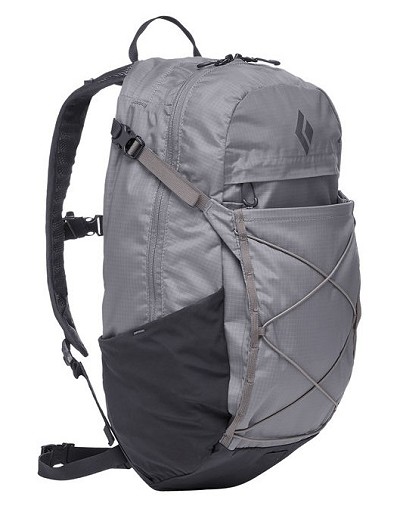



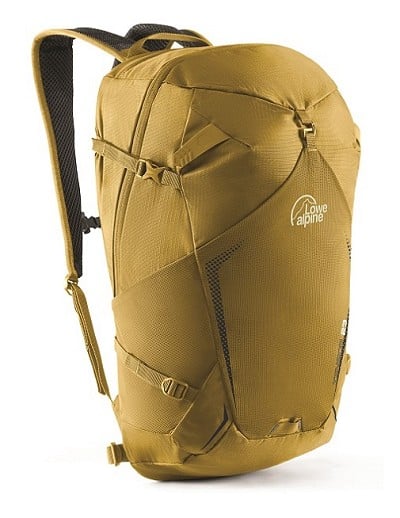
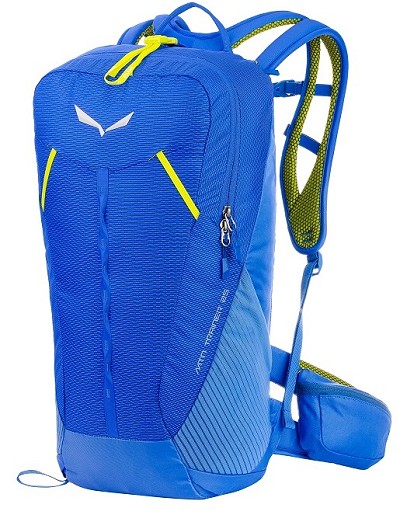

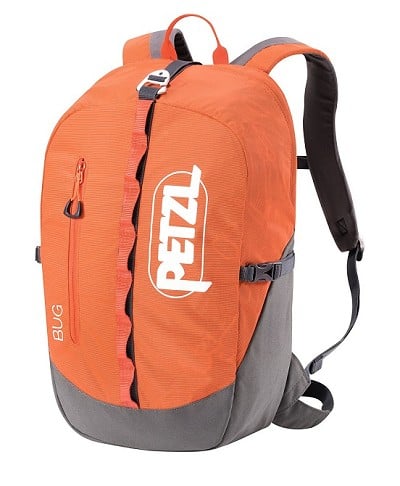
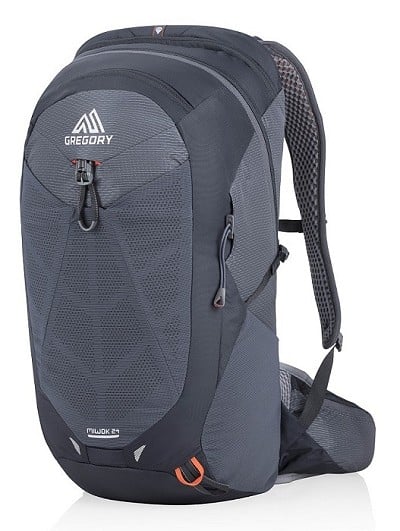
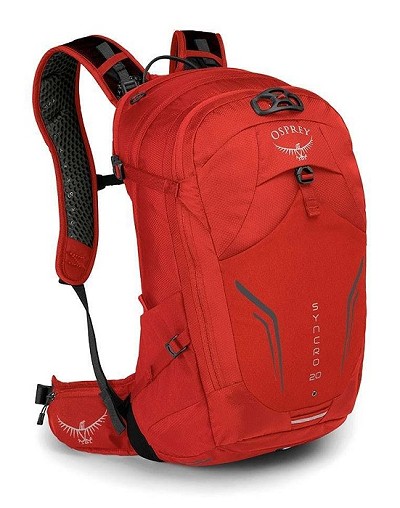

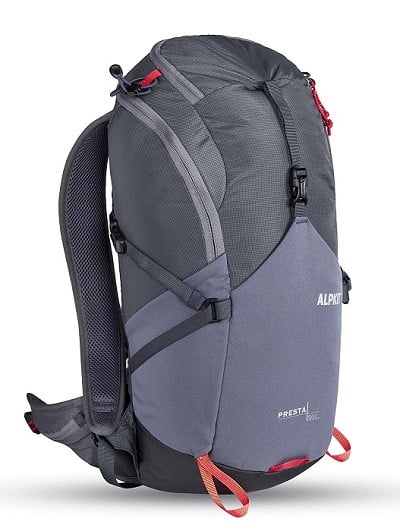
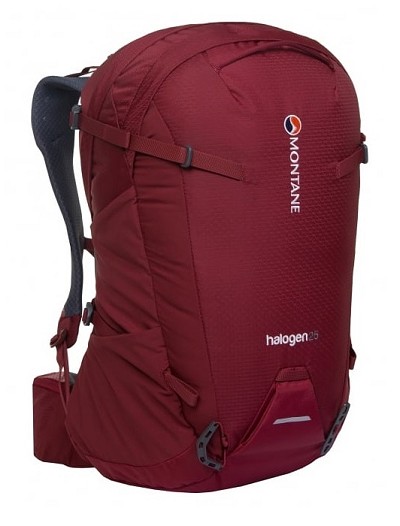

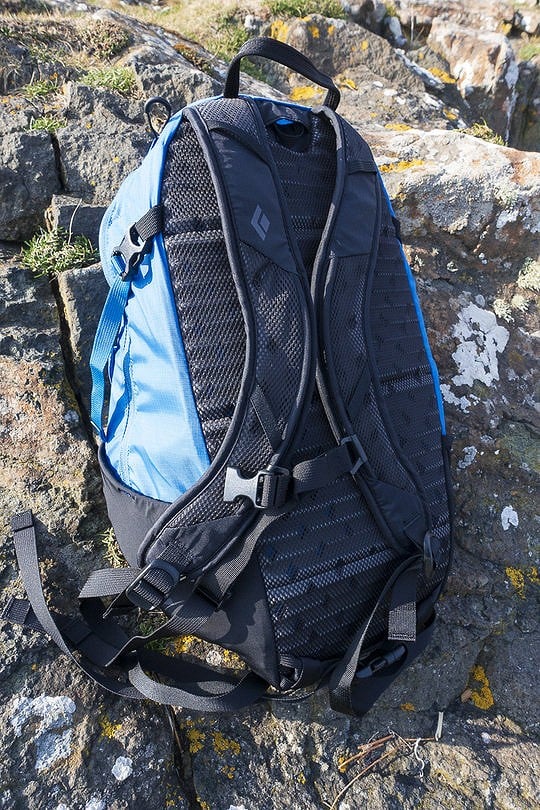

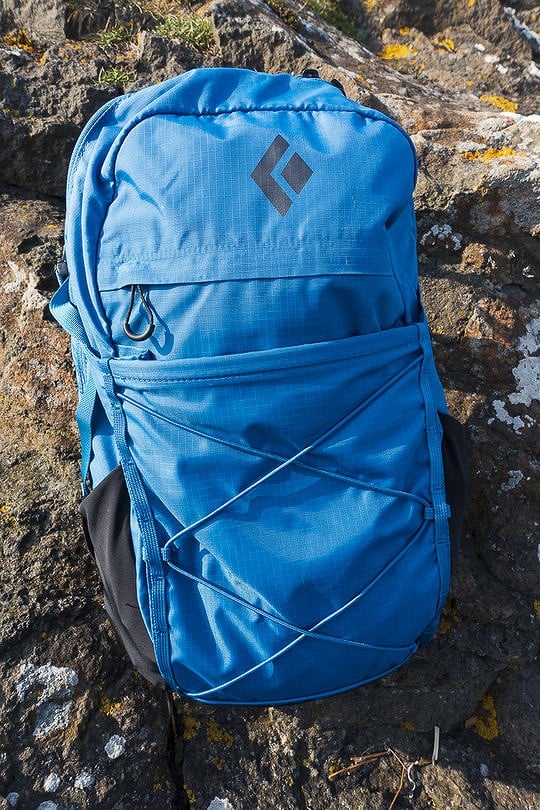





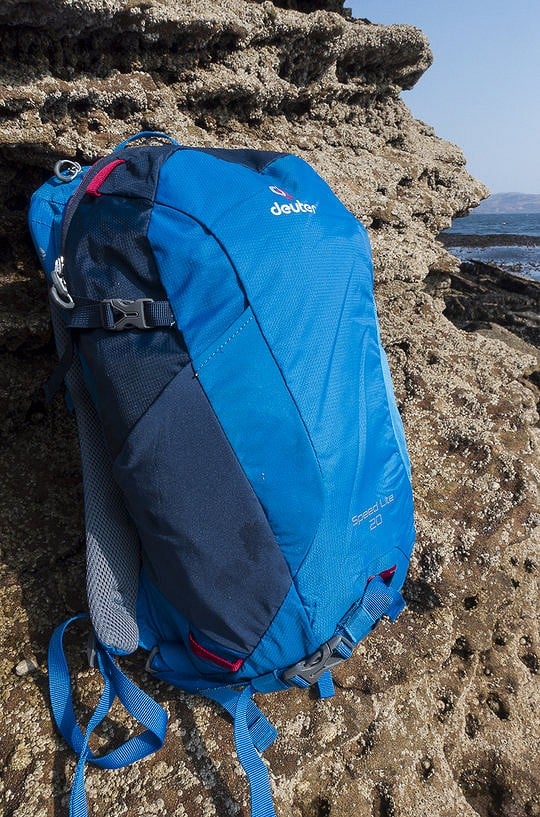

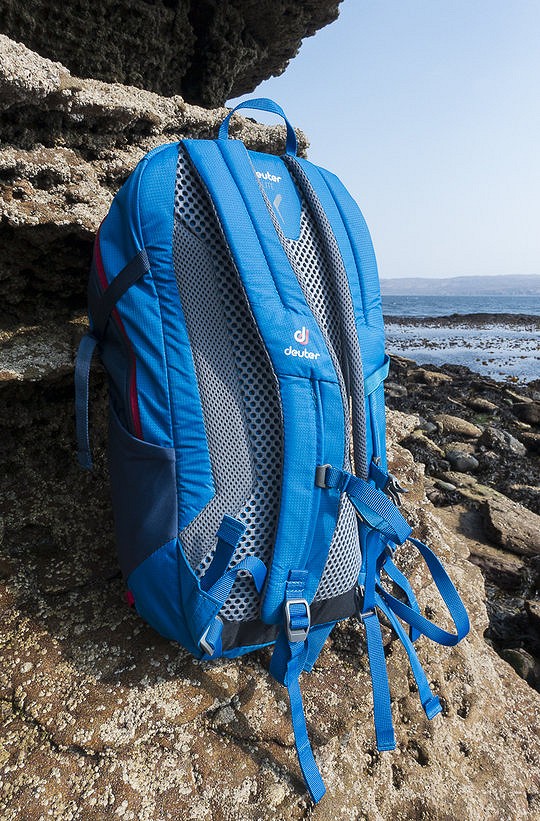









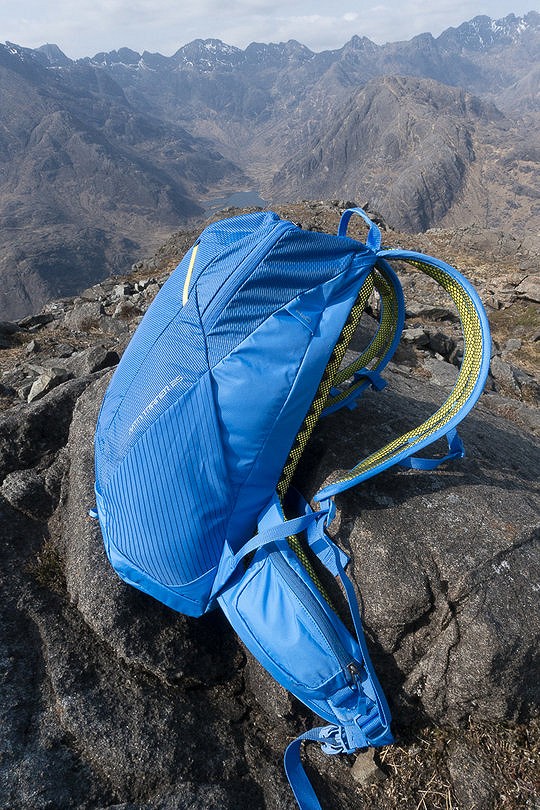
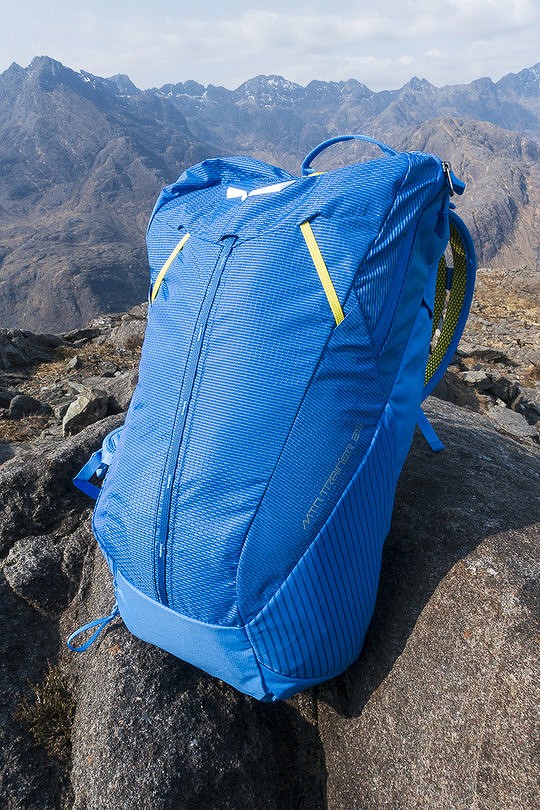









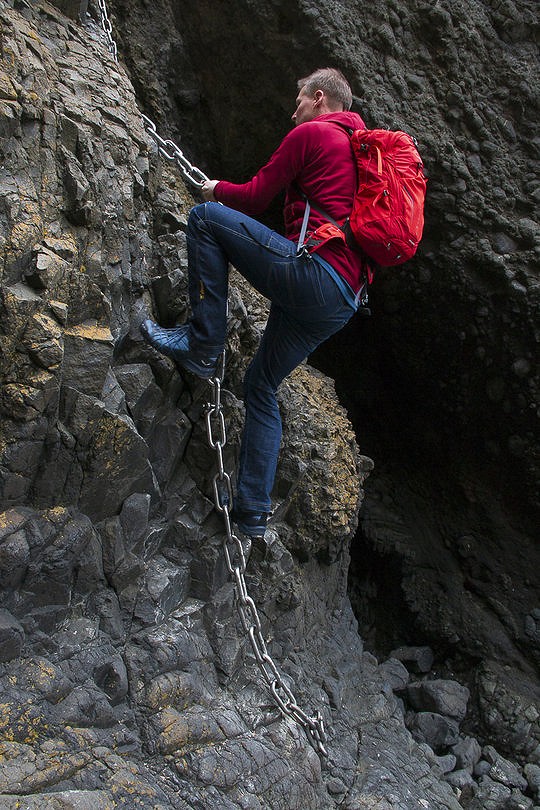
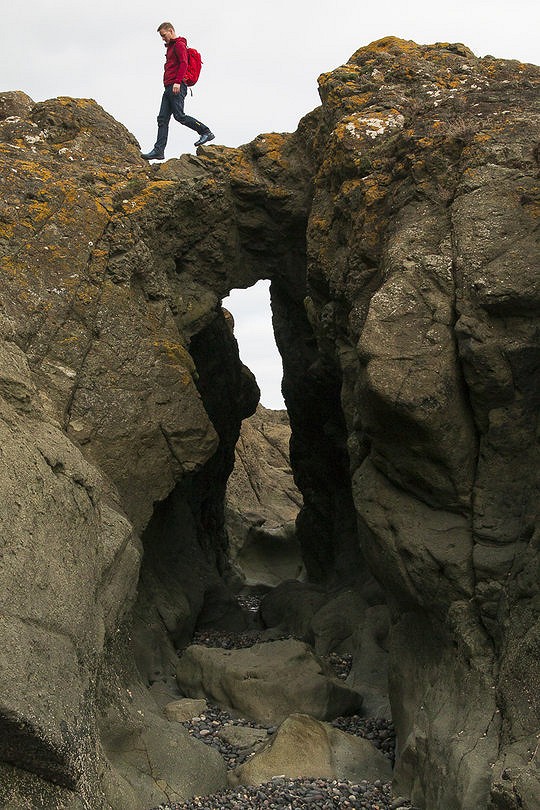
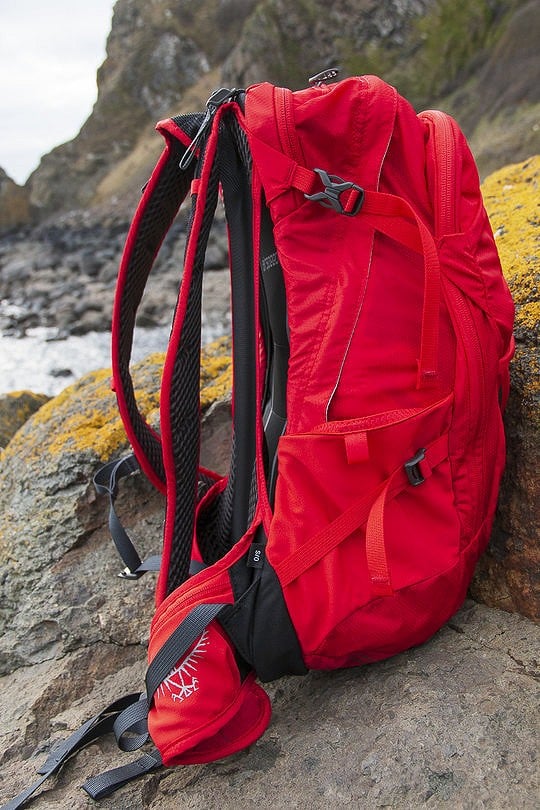
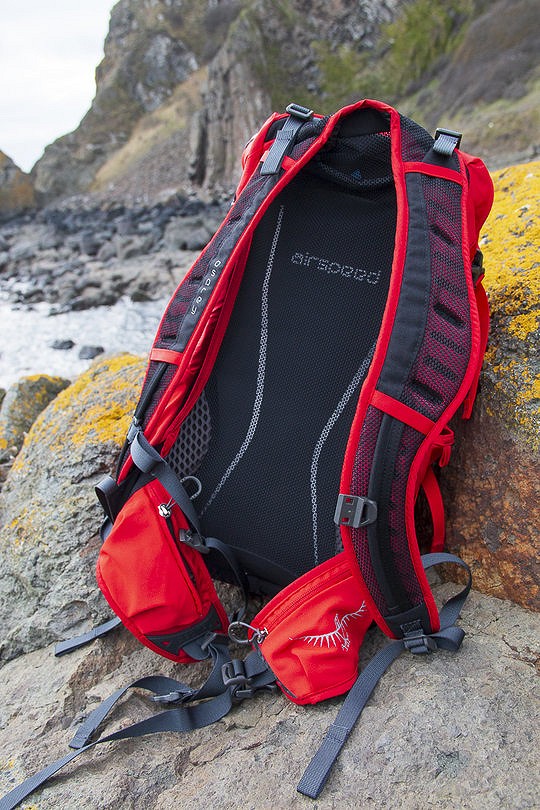
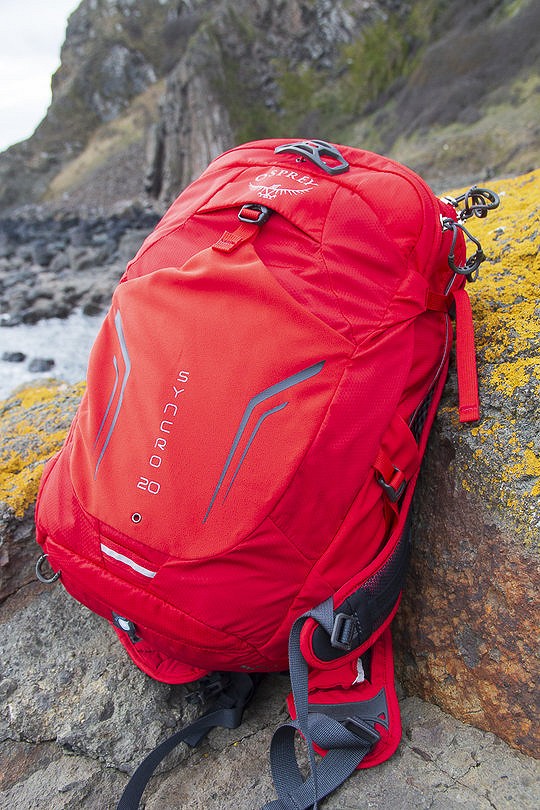
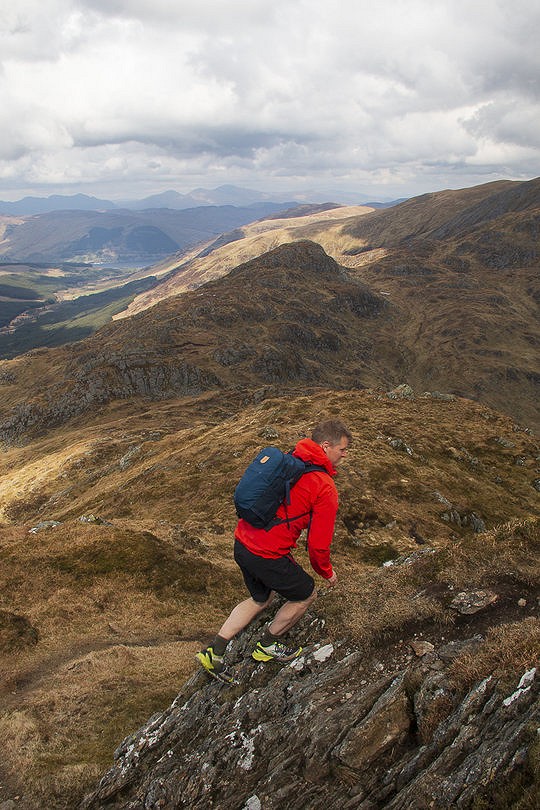
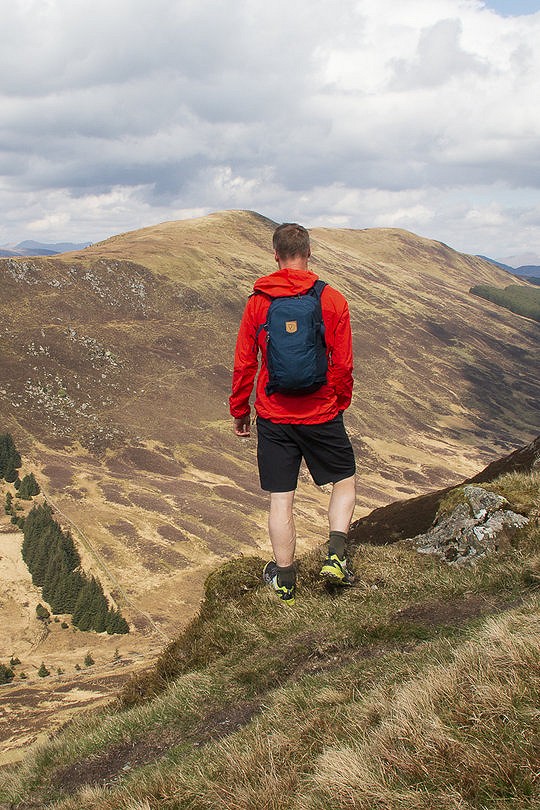
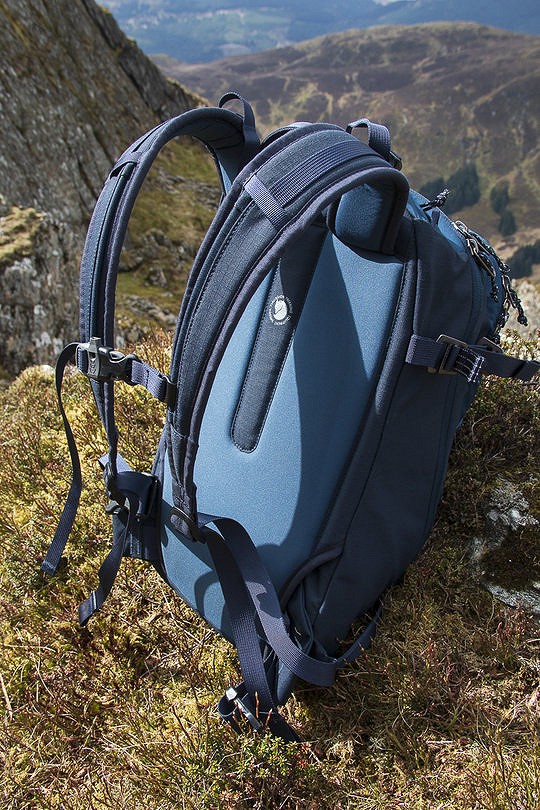



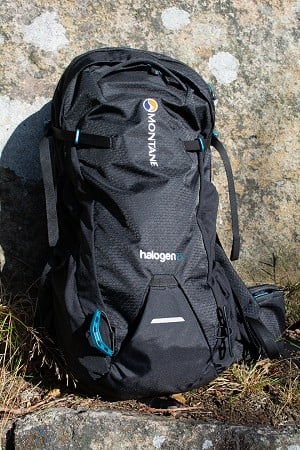
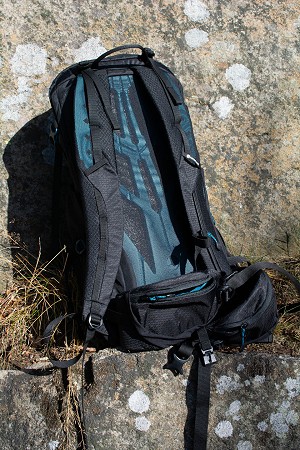
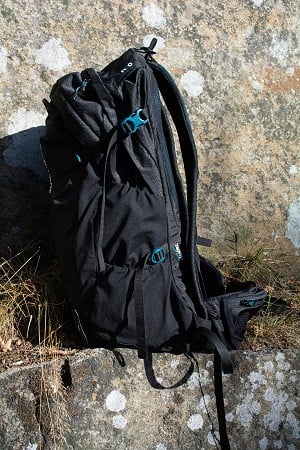





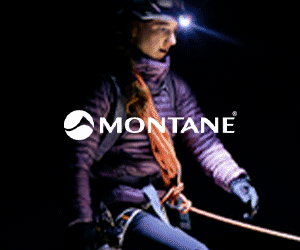





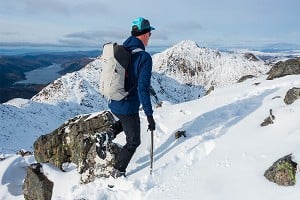














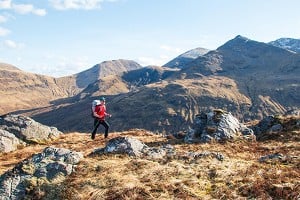
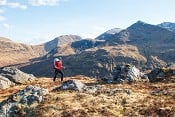


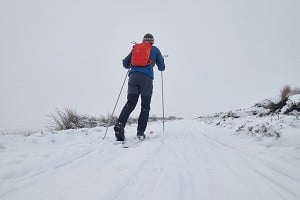
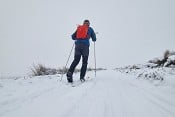
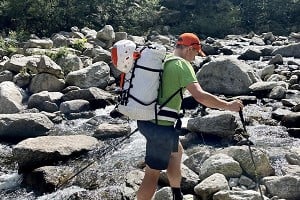

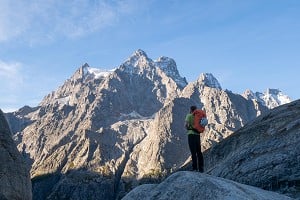
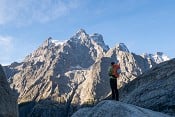
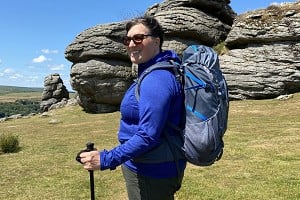



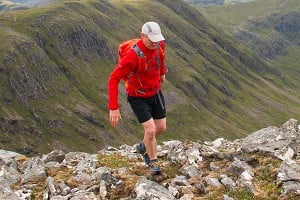

Comments
£20. great bag:
https://www.decathlon.co.uk/alpinism-22l-mountaineering-backpack-grey-id_8495211.html
I get that Decathlon don't pay to advertise on UKC, but IMO it would make more sense to include some outright budget options before that Fjallraven one for £180.
That Decathlon pack looks potentially interesting for £20 - though we've not used it, so that's not an endorsement.
As a general rule we only work with brands who advertise. We've gone over the reasons for this many times so I'll spare you here and assume you know. But suffice to say Decathlon aren't currently on board. When budget brands advertise with us then we do look at their products, and I can point you to a couple of recent examples. We can't all afford top whack, so where possible we'd always like to make space for budget gear.
Back to the Fjallraven pack. Yes it's an eye-opening price for a day pack, and we've said as much. But to play devil's advocate, another way of looking at it is: how long will it last versus a budget alternative, and how far should we be encouraging people to buy cheap when it may just end up as tomorrow's landfill? Is there such a thing as too cheap? That Fjallraven pack could seem like good value when you hand it down to your grandchildren, and by then you might have gone through half a dozen 'bargain' alternatives.
If quality and longevity are important then it makes sense that we include a top-end product like this in a group test lineup. The other ten on review are priced lower anyway.
I think we're all increasingly aware of environmental concerns, so it's worth pointing out that this Fjallraven pack uses organic and recycled materials and it's manufactured to a certain set of 'sustainable' and workplace standards. I'm sure they aren't perfect, and we are not here to advocate for Fjallraven, but at least they're trying.
I think I'm safe to assume that the materials, manufacturing processes and workers' conditions that go into a £20 pack will be far less stringent. The bottom line there is clearly price, and attached to that is likely to be a set of externalised costs that the end consumer isn't necessarily even going to be aware of.
The outdoor industry as a whole could do a lot better at tackling these issues, and I'd include the outdoor media in that. We are currently considering how we might meaningfully incorporate environmental and ethical questions into our reviews in future. Which probably explains the rather long response I've just written.
Just to add to the mix, I've recently got one of these:
https://www.tatonka.com/en/product/cima-di-basso-22/
which at £26 seemed a bargain. Good rope carrying ability (which was important for me) and big enough for a moderate rack and accessories for a day's climbing.
Well if the argument is environmental, then may I suggest that people don't look at new packs, but at there old highschool pack. Most people still have them and they seem to have some indestructible powers. Maybe it's survivorship bias, if it survived high school, it will survive anything else.
I say, time for the UKC writers old highschool pack as day pack test.
I bought the predecessor to the Decathlon/Simond pack mentioned above, originally for travel to/from the office but have been using it for walking & skiing as well & its pretty good & only just starting to show signs of wear after some 6 years of frequent use.